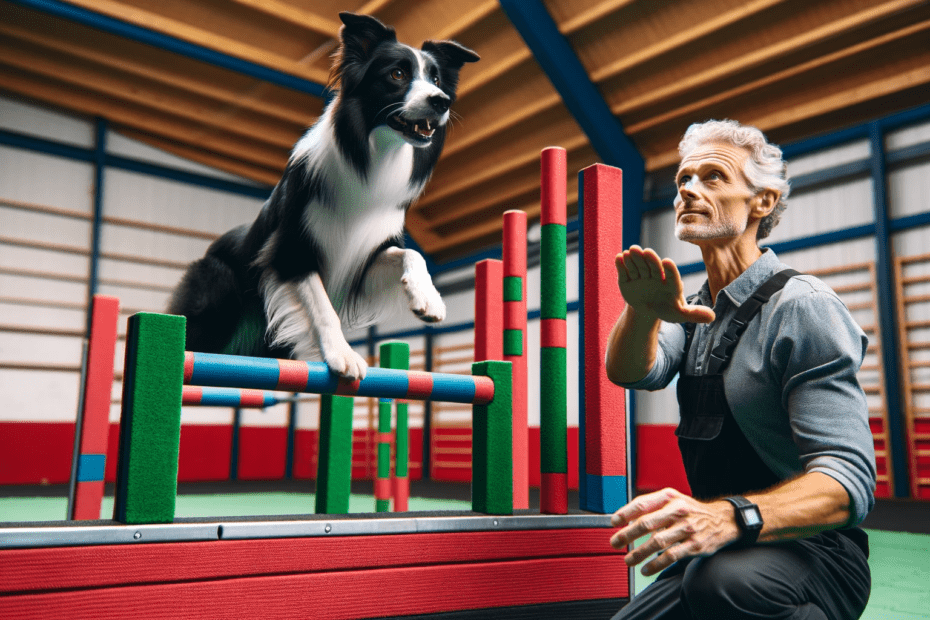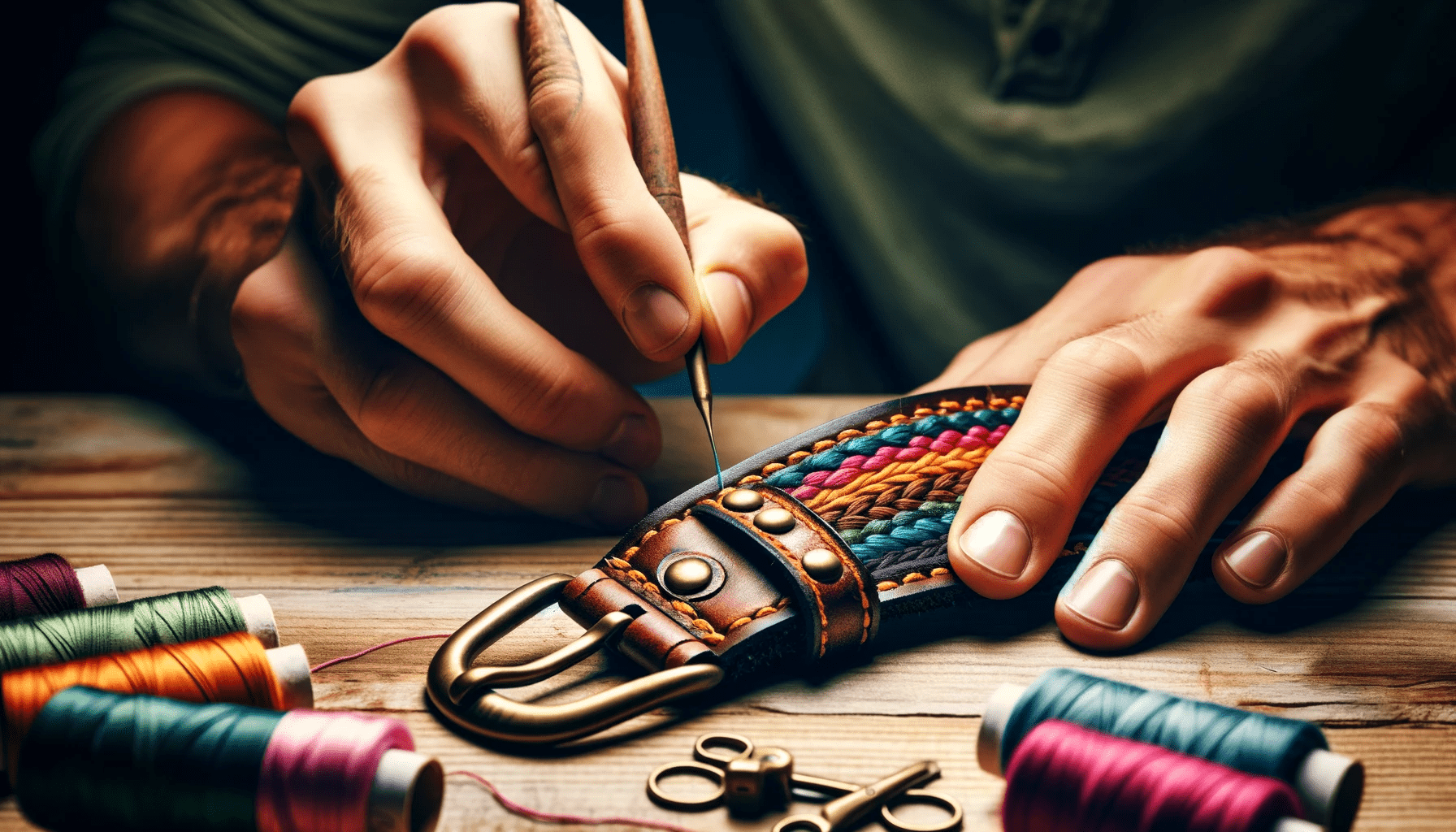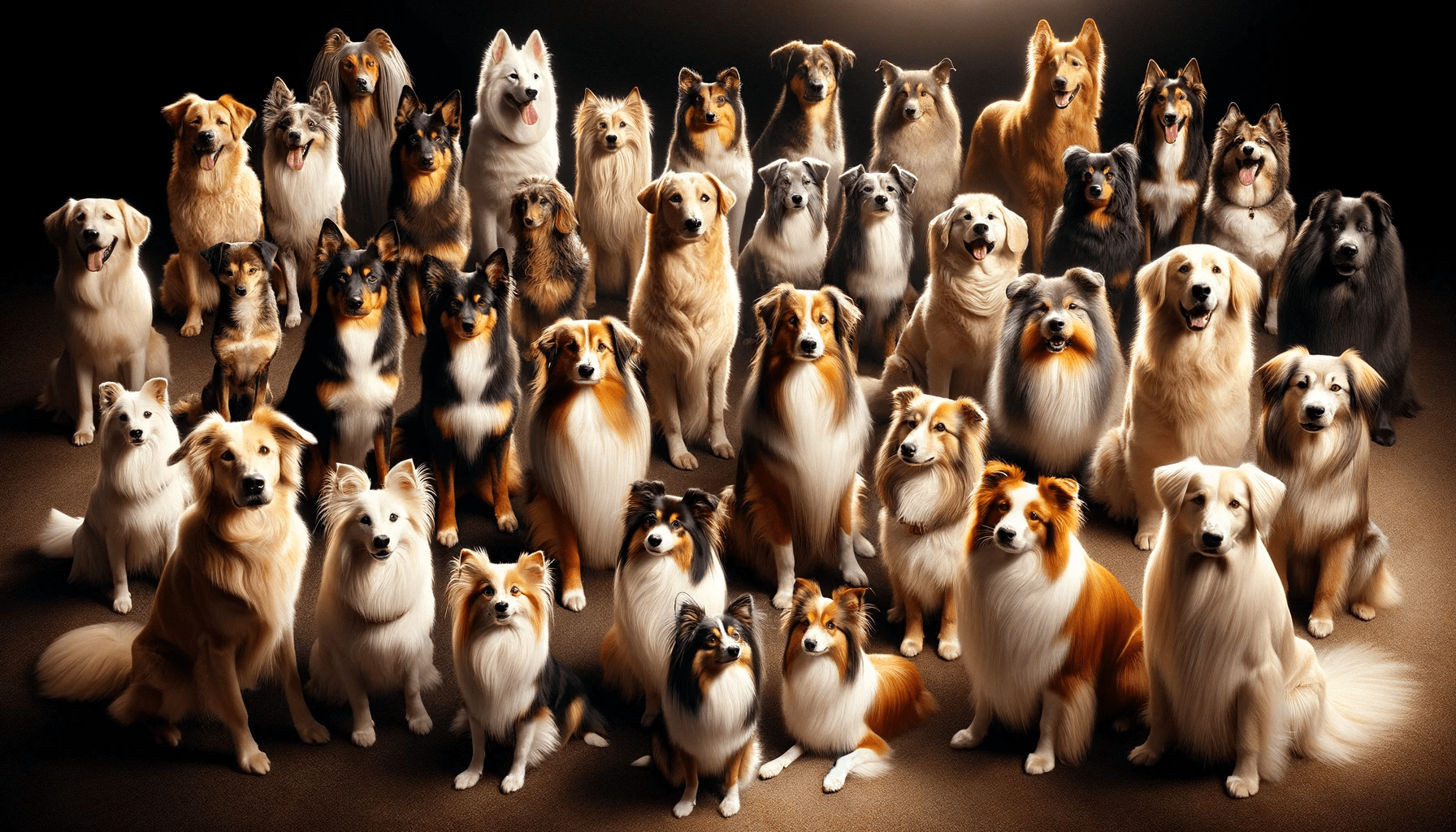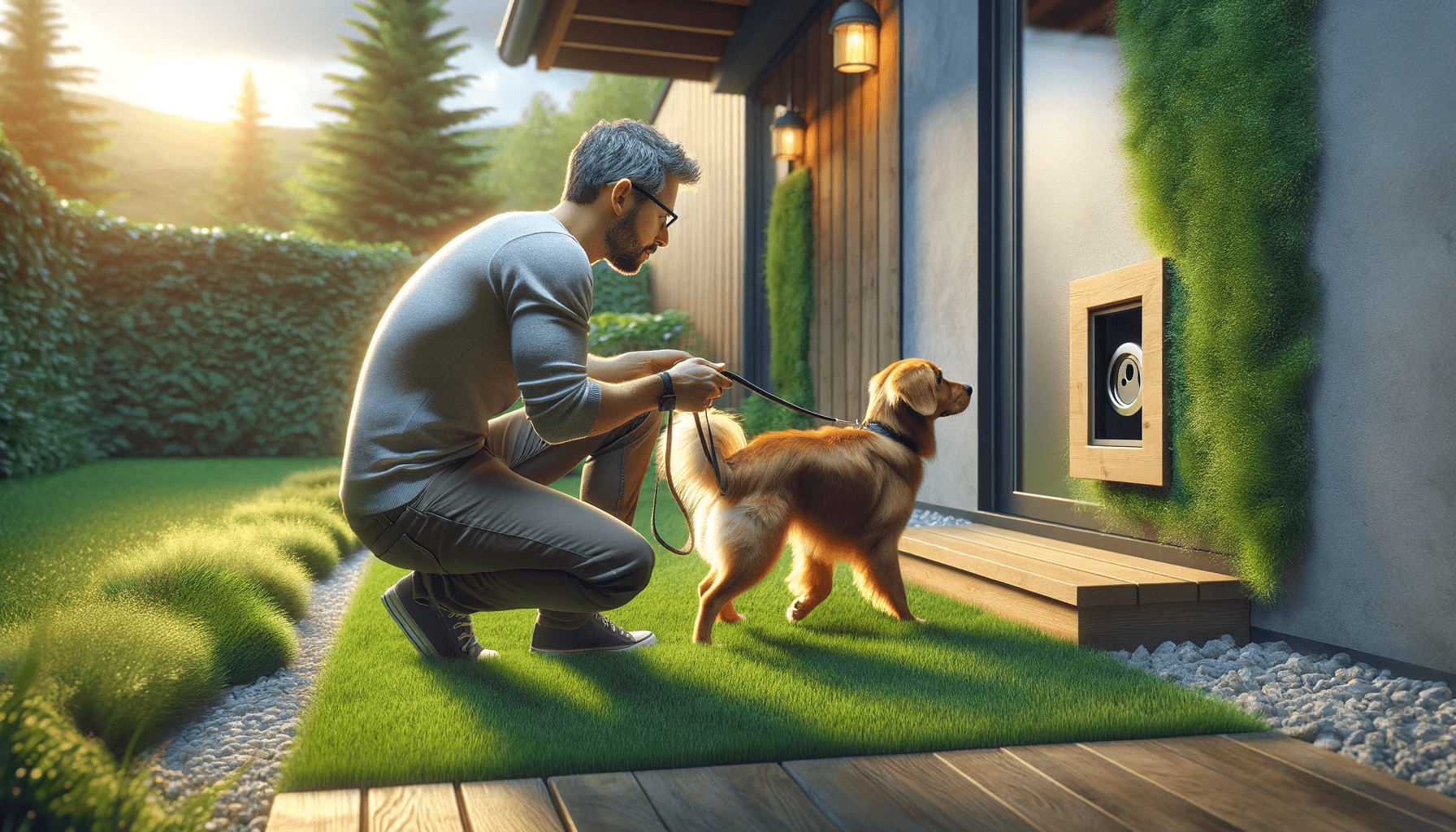If you're ready to take your dog's agility training to the next level, these 9 techniques are a must-try.
From target-specific obstacle training to advanced handling techniques, this article will provide you with all the tools you need to enhance your dog's skills.
With speed and precision drills, mental focus exercises, and competition preparation strategies, you'll be well on your way to becoming a formidable agility team.
Get ready to boost your dog's performance and strengthen your bond in the process.
Key Takeaways
- Target-Specific Obstacle Training
- Speed and Precision Drills
- Incorporate stretching and warm-up exercises for injury prevention
- Visualization and breath control exercises for mental focus
Target-Specific Obstacle Training
To improve your dog's agility skills, incorporate target-specific obstacle training into your routine. This type of training focuses on teaching your dog to discriminate between different obstacles based on specific cues or targets. By incorporating obstacle discrimination techniques into your training sessions, you can help your dog become more precise and efficient when navigating through agility courses.
One effective target-specific training exercise is the use of colored markers or flags placed strategically on different obstacles. Start by introducing your dog to one obstacle at a time, and place a specific colored marker on that obstacle. For example, you can use a blue flag on the tire jump and a yellow flag on the A-frame. Teach your dog to target and touch the specific colored marker associated with each obstacle. This helps them learn to differentiate between obstacles and perform the correct actions.
Another training exercise is the use of directional cues, such as hand signals or verbal commands, to guide your dog towards the correct obstacle. For instance, you can use a hand signal pointing to the right to indicate that your dog should turn right and go through a tunnel. Combine these directional cues with target-specific markers to reinforce your dog's understanding of the correct path.
Incorporating target-specific obstacle training into your routine won't only improve your dog's agility skills but also enhance their ability to make quick decisions and navigate complex courses with confidence.
Speed and Precision Drills
To achieve perfect execution in dog agility, timing is crucial. Balancing speed and accuracy is essential for completing courses with precision.
In speed and precision drills, you'll focus on honing your timing skills and finding the optimal balance between speed and accuracy to improve your overall performance in dog agility.
Timing for Perfect Execution
Improve your dog's speed and precision in agility training with these essential drills.
Timing is crucial when it comes to achieving split-second precision in dog agility. To enhance your timing techniques, incorporate speed and precision drills into your training routine.
One effective drill is the 'start and stop' exercise. Set up a short course with obstacles and practice starting and stopping your dog at specific points. This drill helps develop your timing skills by requiring you to anticipate your dog's movements and execute commands precisely.
Another useful drill is the 'directional change' exercise. Set up a sequence of obstacles and practice changing your dog's direction quickly and accurately. This drill enhances your ability to guide your dog through the course with precise timing.
Balancing Speed and Accuracy
Achieve the perfect balance between speed and accuracy in your dog's agility training by incorporating speed and precision drills into your routine.
Maximizing efficiency and consistency in performance are key goals in any advanced dog agility training program. To achieve this balance, it's important to focus on specific drills that target both speed and precision.
One effective drill is the 'speed ladder,' where you set up a series of obstacles in a straight line and encourage your dog to navigate them as quickly as possible, while maintaining accuracy and avoiding faults.
Another useful drill is the 'precision weave poles,' where you set up a set of weave poles with narrower spacing to challenge your dog's accuracy and encourage them to maintain a consistent weaving motion.
Advanced Handling Techniques
With practice and dedication, you can master advanced handling techniques in dog agility training. These techniques are essential for navigating complex obstacle courses and achieving optimal performance with your furry companion. One important aspect of advanced handling techniques is understanding obstacle course design. This involves analyzing the layout and flow of the course, as well as strategically planning your handling maneuvers. By studying the course beforehand, you can identify potential challenges and develop effective strategies to overcome them.
One advanced handling technique is called 'layering.' Layering involves guiding your dog on different paths or 'layers' through the course. This technique allows you to control your dog's speed and direction while maintaining optimal positioning to tackle obstacles efficiently.
Another technique is 'blind crosses,' where you change sides with your dog without making any physical contact. Blind crosses are useful for maintaining speed and momentum while transitioning between obstacles.
Advanced handling techniques also include 'threadles,' where you direct your dog through a series of closely spaced obstacles by guiding them with your body language. By mastering these techniques, you can enhance your dog's performance in agility competitions and improve your overall teamwork.
Distance and Sequencing Challenges
To successfully navigate distance and sequencing challenges in advanced dog agility training, you need to focus on maintaining clear communication and precise timing with your dog. These challenges require you and your dog to work as a team, understanding each other's cues and movements. Here are some key tips to help you conquer distance and sequencing challenges in advanced agility training:
- Utilize verbal cues: Use clear and concise verbal commands to guide your dog through the course. This will help them understand what you want them to do and when to do it.
- Master body language: Dogs are highly attuned to body language, so make sure your movements are intentional and precise. Use your body to guide your dog through the obstacles.
- Practice distance handling: Gradually increase the distance between you and your dog while they navigate the course. This will help them develop the skills needed to perform at a distance.
- Focus on timing: Timing is crucial in advanced agility training. Anticipate your dog's movements and provide cues at the right moment to keep them on track.
- Train on advanced obstacle course designs: Incorporate various types of obstacles and challenging sequences into your training sessions. This will prepare you and your dog for the complexities of advanced courses.
Cross-Training for Agility
To improve your agility skills even further, incorporate cross-training exercises into your routine. Cross-training involves participating in a variety of activities that complement and enhance your agility training. By engaging in different forms of exercise, you can strengthen your muscles and improve your overall physical fitness, leading to better performance in agility competitions.
One important aspect of cross-training for agility is strength and conditioning exercises. These exercises focus on building muscle strength, endurance, and flexibility, which are essential for performing well in agility courses. Some examples of strength and conditioning exercises include lunges, squats, push-ups, and planks. By incorporating these exercises into your training regimen, you can improve your ability to navigate obstacles and complete agility courses with speed and precision.
In addition to strength and conditioning exercises, cross-training for agility also involves injury prevention techniques. Agility training can be physically demanding, and it's crucial to take steps to minimize the risk of injuries. One effective technique is to incorporate stretching and warm-up exercises before each training session. This helps to loosen up your muscles, increase blood flow, and reduce the risk of strains and sprains. Additionally, incorporating rest days into your training schedule allows your body time to recover and prevent overuse injuries.
Mental Focus Exercises
How can you improve your mental focus in dog agility training?
Improving concentration and minimizing distractions are key to achieving success in this demanding sport. Here are five mental focus exercises that can help you sharpen your skills and enhance your performance:
- Visualization: Close your eyes and imagine yourself navigating an agility course flawlessly. Visualize every obstacle, turn, and jump, and feel the excitement and satisfaction of completing the course successfully. This exercise helps reinforce your mental image of the ideal run.
- Breath control: Practice deep breathing techniques to calm your mind and increase your focus before and during training sessions. Inhale deeply through your nose, hold for a few seconds, and then exhale slowly through your mouth. This exercise helps reduce stress and clear your mind.
- Distraction training: Introduce controlled distractions during training sessions to teach your dog to maintain focus despite external stimuli. Start with mild distractions like toys or treats and gradually increase the difficulty level. This exercise helps improve your dog's ability to concentrate amidst distractions.
- Mental puzzles: Engage your dog in mentally stimulating activities such as puzzle toys or scent games. These activities challenge their problem-solving skills and encourage mental focus.
- Positive reinforcement: Use rewards and praise to reinforce good behavior and focus. Celebrate your dog's successes and provide immediate feedback when they lose concentration. This exercise helps build a strong connection between focus and rewards.
Building Endurance and Stamina
One key aspect of advanced dog agility training is to gradually increase the duration and intensity of physical exercises. Building endurance and stamina are crucial for your dog to excel in agility competitions. Endurance exercises help improve cardiovascular fitness and the ability to sustain physical activity over an extended period.
Interval training techniques can be highly effective in building endurance and stamina in dogs. This involves alternating periods of high-intensity exercise with periods of rest or low-intensity exercise. For example, you could incorporate intervals of running or sprinting into your dog's training routine. Start with shorter intervals and gradually increase the duration as your dog's fitness improves.
In addition to interval training, you can also incorporate other endurance exercises into your dog's training regimen. Long-distance running, swimming, or hiking are excellent activities that can help build your dog's endurance. These exercises engage different muscle groups and promote overall fitness.
It is important to note that building endurance and stamina takes time and consistency. Gradually increase the duration and intensity of the exercises to avoid overexertion or injury. Monitor your dog closely during training sessions and adjust the intensity as needed. Remember to provide plenty of water breaks and allow for sufficient rest between sessions.
Enhancing Communication and Teamwork
As you continue to build endurance and stamina in your dog through interval training and other exercises, it's essential to focus on enhancing communication and teamwork. Developing trust and rapport with your dog is crucial for successful agility training.
Here are some techniques to help you improve communication and teamwork:
- Positive reinforcement: Reward your dog with treats, praise, and playtime when they follow your commands correctly. This creates a positive association and motivates them to work with you.
- Clear and consistent commands: Use simple, concise commands that your dog can easily understand. Be consistent in your language and tone to avoid confusion.
- Body language: Dogs are highly attuned to body language. Use your body and gestures to guide your dog through the course. Maintain an open and confident posture to convey leadership.
- Problem-solving together: Agility courses can present unexpected challenges. Encourage your dog to problem-solve with you by allowing them to think and make decisions. This fosters their problem-solving and decision-making skills.
- Team bonding activities: Engage in activities outside of agility training to strengthen your bond. Play games, go for walks, or participate in other training exercises together. This will deepen your connection and strengthen your teamwork.
Competition Preparation Strategies
To excel in dog agility competitions, you need to focus on two key areas: mental and physical readiness, as well as perfecting obstacle navigation.
Mentally, you must train your dog to stay focused and maintain a calm demeanor amidst the noise and distractions of a competition setting.
Physically, you should ensure your dog is in prime condition through regular exercise and conditioning.
Additionally, mastering obstacle navigation techniques such as tight turns, efficient handling, and accurate timing will greatly improve your chances of success in the ring.
Mental and Physical Readiness
To ensure optimal performance in dog agility competitions, it's important to consistently and actively incorporate mental and physical readiness strategies into your training routine.
Mental preparation plays a crucial role in agility training as it helps you focus, stay calm under pressure, and make quick decisions on the course. This can be achieved through visualization exercises, positive self-talk, and mindfulness techniques.
Additionally, physical fitness is equally important as it enables your dog to have the strength, endurance, and flexibility required to navigate the obstacles with ease. Regular exercise, including cardiovascular workouts, strength training, and stretching, can help improve your dog's overall agility performance.
By prioritizing mental and physical readiness, you can enhance your dog's performance on the agility course and increase your chances of success.
- Visualization exercises: Imagine yourself and your dog successfully completing the course, boosting confidence and motivation.
- Positive self-talk: Use affirmations to stay focused and maintain a positive mindset throughout the competition.
- Mindfulness techniques: Practice being present in the moment, reducing stress and improving concentration.
- Regular exercise: Engage in activities that improve cardiovascular fitness, strength, and flexibility.
- Stretching: Incorporate stretching exercises to enhance your dog's range of motion and prevent injuries.
Perfecting Obstacle Navigation
To improve your dog's performance in agility competitions, focus on perfecting obstacle navigation through effective competition preparation strategies. Obstacle course design plays a crucial role in determining the difficulty and complexity of the course. Analyzing the course beforehand allows you to identify potential challenges and develop a strategy to tackle them.
Start by studying the course map and visualizing how your dog should navigate each obstacle. Pay attention to the order and spacing of the obstacles to determine the best path for your dog to take. Consider factors such as your dog's speed, strengths, and weaknesses when planning your strategy.
Practice specific obstacle sequences to enhance your dog's ability to transition smoothly between obstacles. By analyzing the course and developing a strategy, you can optimize your dog's performance on the agility course.
Frequently Asked Questions
Can I Train My Dog for Advanced Agility if They Are Older or Have Physical Limitations?
Yes, you can train your older dog or a dog with physical limitations for advanced agility. Modify the training to accommodate their needs, focusing on exercises that build strength, improve balance, and promote mental stimulation.
How Often Should I Practice Agility Training With My Dog?
To keep your dog motivated during agility training and improve their speed and agility, practice regularly. Aim for at least three to four training sessions per week, focusing on a variety of exercises and using positive reinforcement techniques.
Are There Any Specific Diet or Nutrition Recommendations for Dogs Participating in Advanced Agility Training?
During advanced agility training, it's important to consider your dog's specific dietary needs. Make sure to provide a balanced and nutritious diet that supports their energy levels and muscle recovery. Additionally, prioritize hydration to keep them performing at their best.
What Is the Best Way to Introduce My Dog to New and Challenging Obstacles?
To introduce your dog to new and challenging obstacles in agility training, start by creating a positive and safe environment. Gradually expose your dog to the obstacles, using treats and praise to build confidence and overcome any fear.
How Can I Prevent Injuries During Advanced Agility Training Sessions?
To prevent injuries during advanced agility training sessions, focus on building your dog's strength and endurance gradually. Use proper warm-up and cool-down exercises, and always monitor your dog for signs of fatigue or discomfort.
Conclusion
In conclusion, incorporating these advanced dog agility training techniques into your practice sessions will help take your dog's skills to the next level.
By targeting specific obstacles, focusing on speed and precision, and utilizing advanced handling techniques, you can enhance your dog's agility performance.
Additionally, cross-training, mental focus exercises, and building endurance will further improve your dog's abilities.
By enhancing communication and teamwork and preparing for competitions, you and your dog can achieve great success in the world of agility.






